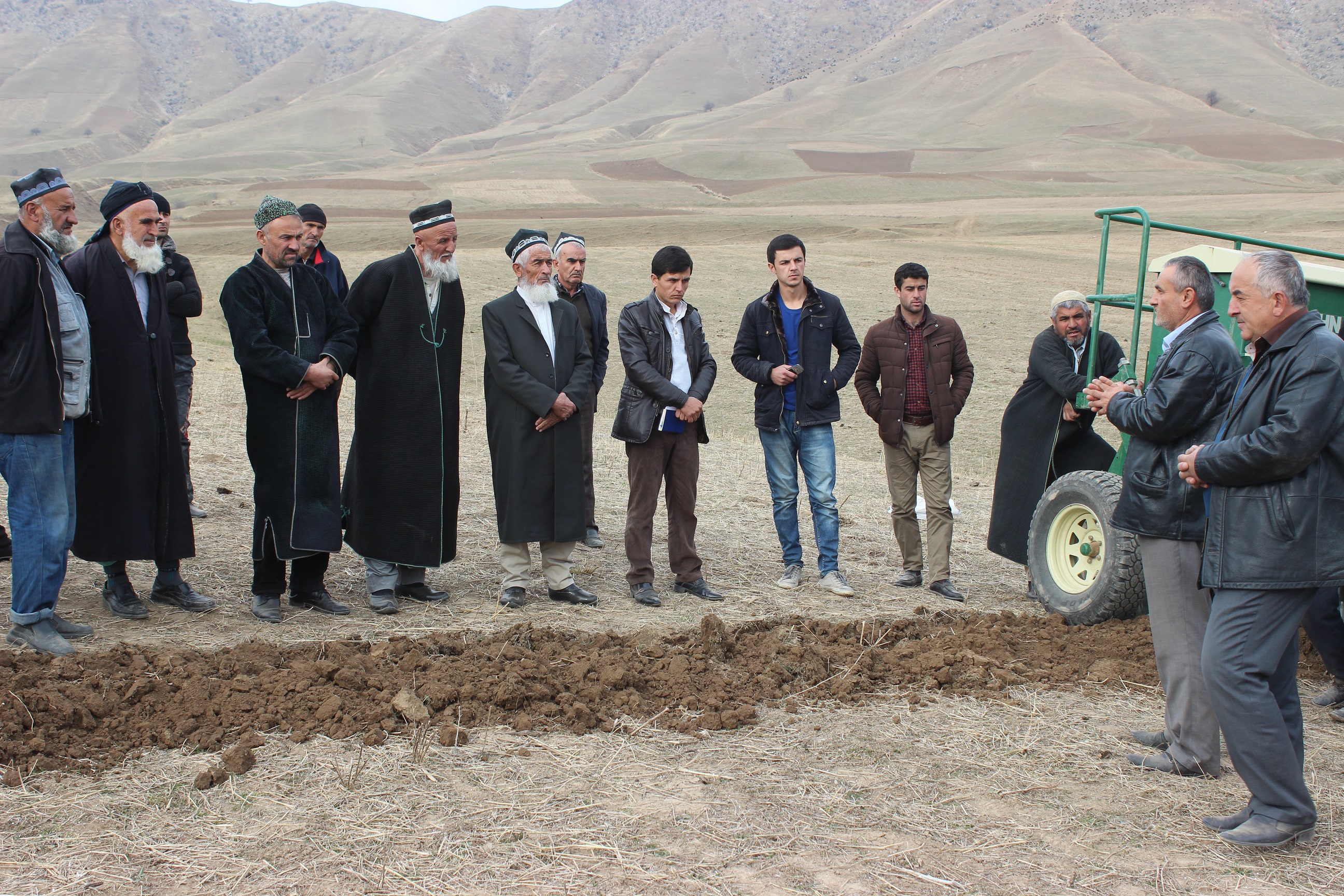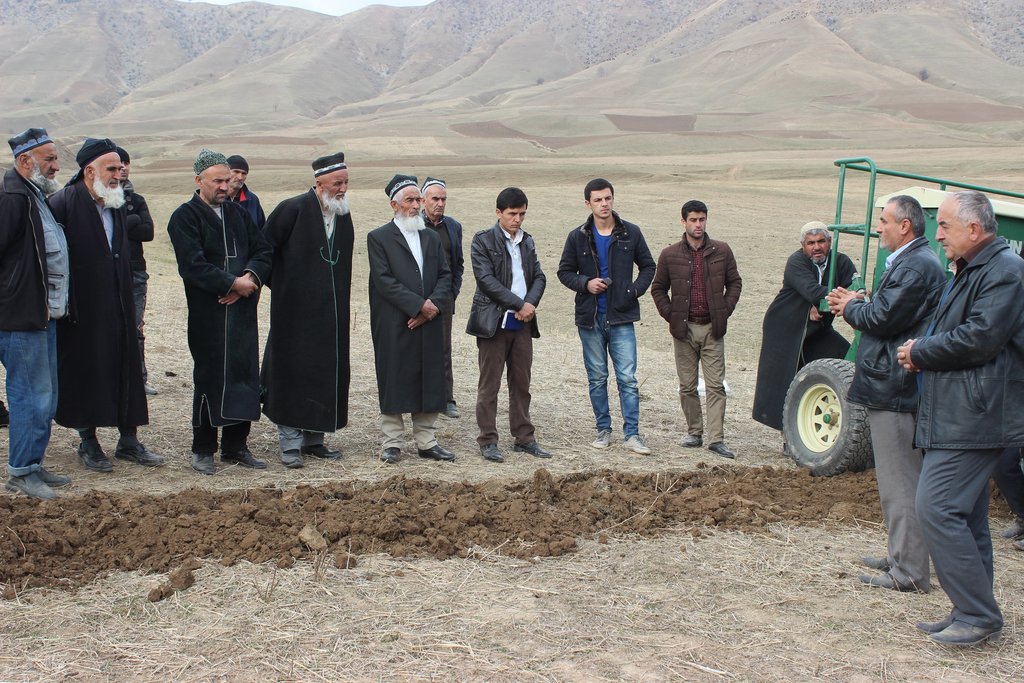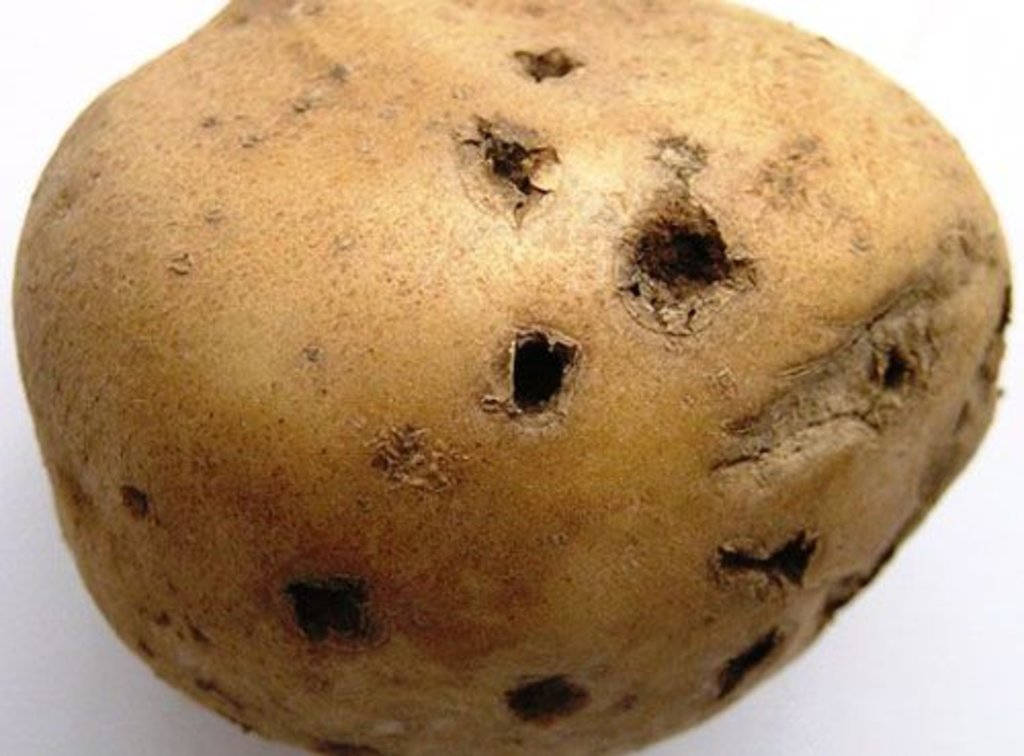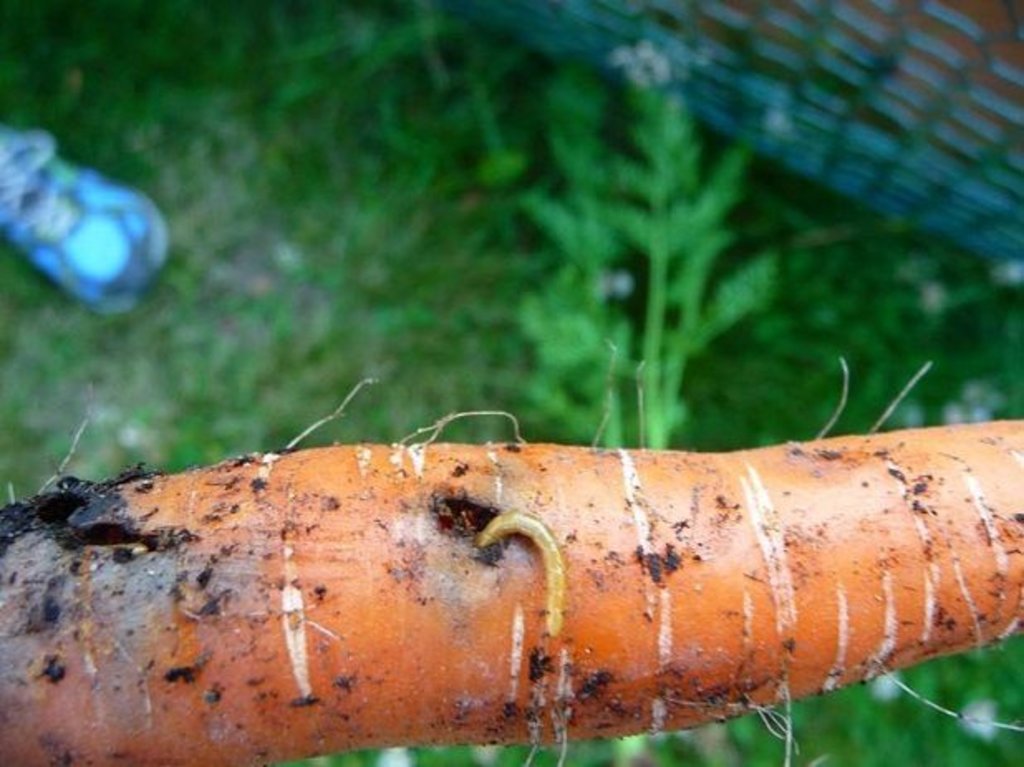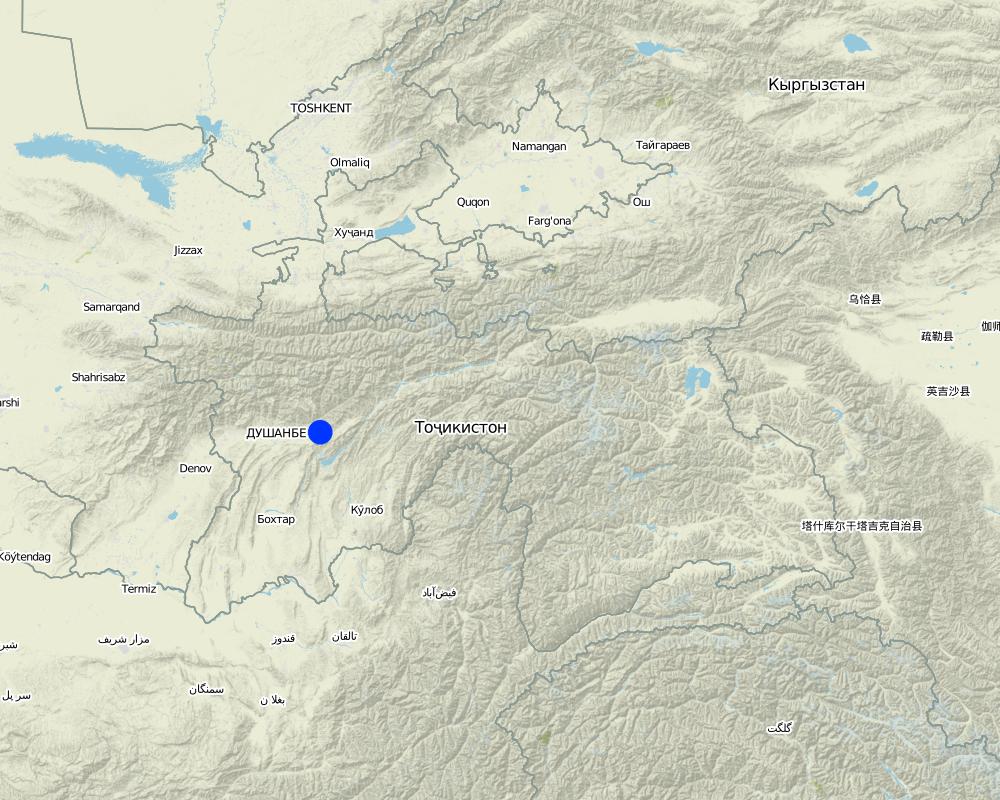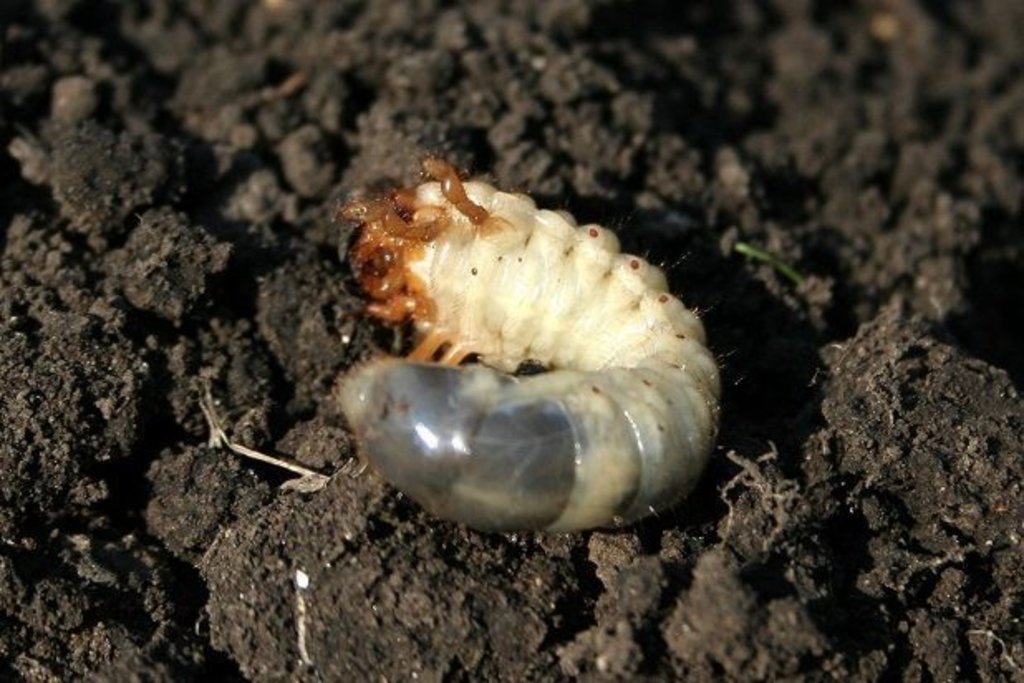Эффективность обработки почвы в борьбе против вредителей сельхозяйственных культур [Tajikistan]
- Creation:
- Update:
- Compiler: MIZROBSHO AMIRBEKOV
- Editor: –
- Reviewers: Farrukh Nazarmavloev, Alexandra Gavilano
Ахамияти коркарди хок нисбати нестсозии зарарасонхои зироатхои хочагии кишлок
technologies_3855 - Tajikistan
View sections
Expand all Collapse all1. General information
1.2 Contact details of resource persons and institutions involved in the assessment and documentation of the Technology
Key resource person(s)
SLM specialist:
Name of project which facilitated the documentation/ evaluation of the Technology (if relevant)
Mountain Societies Development Support Programme, TajikistanName of the institution(s) which facilitated the documentation/ evaluation of the Technology (if relevant)
Deutsche Gesellschaft für Internationale Zusammenarbeit (GIZ) GmbH (GIZ) - GermanyName of the institution(s) which facilitated the documentation/ evaluation of the Technology (if relevant)
Committee for Environment Protection of Tajikistan (Committee for Environment Protection of Tajikistan) - Tajikistan1.3 Conditions regarding the use of data documented through WOCAT
The compiler and key resource person(s) accept the conditions regarding the use of data documented through WOCAT:
Yes
1.4 Declaration on sustainability of the described Technology
Is the Technology described here problematic with regard to land degradation, so that it cannot be declared a sustainable land management technology?
No
Comments:
Технология является почвозащитная и природоохраняющая.
2. Description of the SLM Technology
2.1 Short description of the Technology
Definition of the Technology:
Под обработкой понимают механическое воздействие на почву рабочими органами почвообрабатывающих машин и орудий в целях создания оптимальных почвенных условий для выращиваемых растений. Обработка почвы -основное агротехническое средство регулирования почвенных режимов, интенсивности биологических процессов и, главное, оновными задачами системы обработки почвы является уничтожение вредителей сельскохозяйственных культур в полях севооборота
2.2 Detailed description of the Technology
Description:
Под обработкой понимают механическое воздействие на почву рабочими органами почвообрабатывающих машин и орудий в целях создания оптимальных почвенных условий для выращиваемых растений. Обработка почвы -основное агротехническое приём по регулирования почвенных режимов, интенсивности биологических процессов и, главное, основными задачами системы обработки почвы является уничтожение вредителей сельскохозяйственных культур в полях севооборота
В почву откладывают яйца хрущи, различные долгоносики, жуки –щелкуны и чернотелки, большинство крестоцветных и свекловичных блошек. Луковая, капустная, морковная и другие мухи откладывают яйца на поверхность почвы, рядом с растениями. Проволочники, то есть личинки жуков-щелкунов, и личинки майского жука находятся в почве все четыре года своей жизни. Всю личиночную стадию, длящуюся, в зависимости от вида, от нескольких месяцев до 2 лет, проводят в почве жуки-чернотелки, они же ложнопроволочники, серый и черный долгоносики, ростковая и капустная мухи, жуки-блошки и другие насекомые. Очень многие насекомые окукливаются в почве. Многие жуки зимуют в ней в стадии взрослого насекомого.
Главным технологическим приемом обработки почвы против вредителей является вспашка. При вспашке разрушаются камеры окукливания насекомых, личинки их попадают в поверхностные слои почвы, где гибнут вследствие нарушения условий обитания, уничтожаются режущими частями орудий, птицами, запахиваются в глубокие слон почвы, откуда не могут выбраться. Гибели насекомых особенно способствует глубокая сплошная вспашка, тщательная обработка междурядий и содержание намеченных для культивирования площадей без сорняков.
Зяблевая вспашка после ранних зерновых, которая проводиться, может, даже в конце лета почти решает такую проблему, как гусеницы многоядных совок. Кстати, летом можно также обрабатывать междурядье, особенно в те периоды, когда в почве вредители находятся в стадии куколок, личинок, яиц. Если в этот период провести рыхление почвы, то можно повредить куколок, открыть к ним доступ для хищников, которые ими питаются,вытянуть на поверхность куколок, где они непременно высохнут.
2.3 Photos of the Technology
2.5 Country/ region/ locations where the Technology has been applied and which are covered by this assessment
Country:
Tajikistan
Region/ State/ Province:
Файзабадский район
Further specification of location:
Село Фатхобод
Specify the spread of the Technology:
- applied at specific points/ concentrated on a small area
Comments:
Село Фатхобод находится в административном территории Файзабадского района Таджикистан
Технология применялось точечно, как демонстрационная участка для обучение фермеров
Map
×2.6 Date of implementation
If precise year is not known, indicate approximate date:
- less than 10 years ago (recently)
2.7 Introduction of the Technology
Specify how the Technology was introduced:
- through projects/ external interventions
Comments (type of project, etc.):
Технология практикуется через Программа Помощи и Поддержки Развития Горных Регионов
3. Classification of the SLM Technology
3.1 Main purpose(s) of the Technology
- improve production
- conserve ecosystem
- create beneficial economic impact
- create beneficial social impact
3.2 Current land use type(s) where the Technology is applied

Cropland
- Annual cropping
- Зерновых, овощей, картофель и садоводство
Number of growing seasons per year:
- 1
Specify:
В условиях Файзабадского района из-за ограничение погодно- климатические условии можно получить только один урожай сельхозкультур в течение сезона.

Grazing land
Extensive grazing:
- Semi-nomadic pastoralism
- Местных пород коров, овец и коз (2 коров и 3 овец и коз)
Comments:
Технология направлено на защита урожя фермеров. Она применяется через повышение знание фермеров при организации обучении и создание демонстративных участков
3.4 Water supply
Water supply for the land on which the Technology is applied:
- full irrigation
Comments:
В село Фатхобод имеются богарных земель и поливных земель. Богарные земли используются для выращивание зерновых и кормовых культур, а орошаемые земли для посева картофелья и овощей.
При повышение знание фермеров практика использование земель , обработку почвы и выращивание урожая улучшилось
3.5 SLM group to which the Technology belongs
- rotational systems (crop rotation, fallows, shifting cultivation)
- improved ground/ vegetation cover
- integrated soil fertility management
3.6 SLM measures comprising the Technology

agronomic measures
- A1: Vegetation/ soil cover
- A3: Soil surface treatment
- A4: Subsurface treatment

management measures
- M1: Change of land use type
- M2: Change of management/ intensity level

other measures
Comments:
Повышение знание фермеров над управление земли и урожая
3.7 Main types of land degradation addressed by the Technology

soil erosion by water
- Wt: loss of topsoil/ surface erosion

soil erosion by wind
- Et: loss of topsoil

chemical soil deterioration
- Cp: soil pollution

biological degradation
- Bp: increase of pests/ diseases, loss of predators
Comments:
Почвенные вредители являются проблемой для выращивание урожая и данная технология напровлено для защита урожая фермеров
3.8 Prevention, reduction, or restoration of land degradation
Specify the goal of the Technology with regard to land degradation:
- not applicable
Comments:
Технология не направлена для предотвращение деградации земель.
4. Technical specifications, implementation activities, inputs, and costs
4.1 Technical drawing of the Technology
Technical specifications (related to technical drawing):
При проведение обработки почвы почвенные вредители поднимаются над поверхности почв и уничтожаются.
Author:
Рисунок было взято из архива MSDSP, автор выбора Амирбеков Мизроб
Date:
10/06/2018
4.2 General information regarding the calculation of inputs and costs
Specify how costs and inputs were calculated:
- per Technology unit
Specify unit:
га
Specify currency used for cost calculations:
- USD
If relevant, indicate exchange rate from USD to local currency (e.g. 1 USD = 79.9 Brazilian Real): 1 USD =:
9.2
Indicate average wage cost of hired labour per day:
2.7
4.3 Establishment activities
| Activity | Timing (season) | |
|---|---|---|
| 1. | Зяблевая вспашка осенью | октябрь |
| 2. | Основная вспашка | апрель |
| 3. | Бороздования | апрель |
| 4. | Посевь семянь | апрель |
| 5. | Культивация-2 раза | май-июнь |
| 6. | Применение подкормок-2 раза | июнь-июль |
| 7. | Орошение-5 раз | июль-сентябрь |
| 8. | Удаление ботвы | октябрь |
| 9. | Сбор урожая | октябрь |
4.4 Costs and inputs needed for establishment
| Specify input | Unit | Quantity | Costs per Unit | Total costs per input | % of costs borne by land users | |
|---|---|---|---|---|---|---|
| Labour | Зяблевая вспашка | га | 1.0 | 54.0 | 54.0 | |
| Labour | Основная пахота | га | 1.0 | 54.0 | 54.0 | |
| Labour | Посев | га | 1.0 | 54.0 | 54.0 | |
| Equipment | Аренда трактора | раз | 2.0 | 11.0 | 22.0 | |
| Equipment | Аренда копателья | раз | 1.0 | 11.0 | 11.0 | |
| Plant material | Семена картофель | кг | 3500.0 | 0.38 | 1330.0 | |
| Fertilizers and biocides | Аммофос | кг | 250.0 | 0.54 | 135.0 | |
| Fertilizers and biocides | Карбомид | кг | 100.0 | 0.54 | 54.0 | |
| Total costs for establishment of the Technology | 1714.0 | |||||
| Total costs for establishment of the Technology in USD | 186.3 | |||||
If land user bore less than 100% of costs, indicate who covered the remaining costs:
Все затраты покрываются за счёт фермера
Comments:
По инициативу фермера была организованно демонстрационная участка
4.5 Maintenance/ recurrent activities
| Activity | Timing/ frequency | |
|---|---|---|
| 1. | Зяблевая вспашка | октябрь |
| 2. | Основная вспашка | апрель |
| 3. | Бороздования | апрель |
| 4. | Посевь | апроель |
| 5. | Культивация-2 раза | май-июнь |
| 6. | Проведение подкормки | июнь-июль |
| 7. | Орошение-5 раз | июль-сентябрь |
| 8. | Удаление ботвы | октябрь |
| 9. | Сбор урожая | октябрь |
Comments:
Сущность технология можно показать фермерам во время проведение зяблевая и основная вспашка. Результат качество полученного урожая можно показать фермерам при уборке урожая
4.6 Costs and inputs needed for maintenance/ recurrent activities (per year)
| Specify input | Unit | Quantity | Costs per Unit | Total costs per input | % of costs borne by land users | |
|---|---|---|---|---|---|---|
| Labour | Зяблевая вспашка | га | 1.0 | 54.0 | 54.0 | |
| Labour | Основная вспашка | га | 1.0 | 54.0 | 54.0 | |
| Labour | Посевь | га | 1.0 | 54.0 | 54.0 | |
| Equipment | Аренда трактора | раз | 2.0 | 11.0 | 22.0 | |
| Equipment | Аренда копателья | раз | 1.0 | 11.0 | 11.0 | |
| Plant material | Семена картофелья | кг | 3500.0 | 0.38 | 1330.0 | |
| Fertilizers and biocides | Аммофос | кг | 250.0 | 0.54 | 135.0 | |
| Fertilizers and biocides | Карбомид | кг | 100.0 | 0.54 | 54.0 | |
| Total costs for maintenance of the Technology | 1714.0 | |||||
| Total costs for maintenance of the Technology in USD | 186.3 | |||||
If land user bore less than 100% of costs, indicate who covered the remaining costs:
Все затраты покрывались за счёт фермера
4.7 Most important factors affecting the costs
Describe the most determinate factors affecting the costs:
Изменение цен товаров на рынок
5. Natural and human environment
5.1 Climate
Annual rainfall
- < 250 mm
- 251-500 mm
- 501-750 mm
- 751-1,000 mm
- 1,001-1,500 mm
- 1,501-2,000 mm
- 2,001-3,000 mm
- 3,001-4,000 mm
- > 4,000 mm
Specify average annual rainfall (if known), in mm:
1200.00
Specifications/ comments on rainfall:
Село Фатхобод расположено на верхной части района Файзабада и по сравнение центральной части района имеет больше количество осадок.
Indicate the name of the reference meteorological station considered:
Файзабадский
Agro-climatic zone
- sub-humid
Из-за расположение село климат является умеренно-влажная
5.2 Topography
Slopes on average:
- flat (0-2%)
- gentle (3-5%)
- moderate (6-10%)
- rolling (11-15%)
- hilly (16-30%)
- steep (31-60%)
- very steep (>60%)
Landforms:
- plateau/plains
- ridges
- mountain slopes
- hill slopes
- footslopes
- valley floors
Altitudinal zone:
- 0-100 m a.s.l.
- 101-500 m a.s.l.
- 501-1,000 m a.s.l.
- 1,001-1,500 m a.s.l.
- 1,501-2,000 m a.s.l.
- 2,001-2,500 m a.s.l.
- 2,501-3,000 m a.s.l.
- 3,001-4,000 m a.s.l.
- > 4,000 m a.s.l.
Indicate if the Technology is specifically applied in:
- not relevant
Comments and further specifications on topography:
Рельеф местности является сложным. Имеется равнины,крутые склоны.
5.3 Soils
Soil depth on average:
- very shallow (0-20 cm)
- shallow (21-50 cm)
- moderately deep (51-80 cm)
- deep (81-120 cm)
- very deep (> 120 cm)
Soil texture (topsoil):
- medium (loamy, silty)
Soil texture (> 20 cm below surface):
- medium (loamy, silty)
Topsoil organic matter:
- medium (1-3%)
If available, attach full soil description or specify the available information, e.g. soil type, soil PH/ acidity, Cation Exchange Capacity, nitrogen, salinity etc.
Почвы местносты являются темным серозёмом и хорошо плодородные
5.4 Water availability and quality
Ground water table:
5-50 m
Availability of surface water:
good
Water quality (untreated):
good drinking water
Comments and further specifications on water quality and quantity:
Питьевя вода является источниковая, иригационная вода соберётся из верхный горы село.
5.5 Biodiversity
Species diversity:
- medium
Habitat diversity:
- medium
Comments and further specifications on biodiversity:
Биоразнообразия село Фатхобод является средная
5.6 Characteristics of land users applying the Technology
Sedentary or nomadic:
- Sedentary
Market orientation of production system:
- mixed (subsistence/ commercial)
Off-farm income:
- 10-50% of all income
Relative level of wealth:
- rich
Individuals or groups:
- individual/ household
Level of mechanization:
- manual work
- animal traction
Gender:
- women
- men
Age of land users:
- middle-aged
- elderly
Indicate other relevant characteristics of the land users:
Молодёжь село находиться на миграция и вернётся к осени
5.7 Average area of land used by land users applying the Technology
- < 0.5 ha
- 0.5-1 ha
- 1-2 ha
- 2-5 ha
- 5-15 ha
- 15-50 ha
- 50-100 ha
- 100-500 ha
- 500-1,000 ha
- 1,000-10,000 ha
- > 10,000 ha
Is this considered small-, medium- or large-scale (referring to local context)?
- medium-scale
Comments:
Земля по закону принадлежить государство и переданно фермерам для долгосрочного пользования.
5.8 Land ownership, land use rights, and water use rights
Land ownership:
- state
Land use rights:
- communal (organized)
Water use rights:
- communal (organized)
Comments:
Земля и вода являются государственными и пользуются им фермеров на основе дольгосрочного пользования.
5.9 Access to services and infrastructure
health:
- poor
- moderate
- good
education:
- poor
- moderate
- good
technical assistance:
- poor
- moderate
- good
employment (e.g. off-farm):
- poor
- moderate
- good
markets:
- poor
- moderate
- good
energy:
- poor
- moderate
- good
roads and transport:
- poor
- moderate
- good
drinking water and sanitation:
- poor
- moderate
- good
financial services:
- poor
- moderate
- good
6. Impacts and concluding statements
6.1 On-site impacts the Technology has shown
Socio-economic impacts
Production
crop production
Quantity after SLM:
После применение технологии увеличился
Comments/ specify:
Увеличилься урожай за счёт сокращение вредителей
crop quality
Quantity after SLM:
Улучшилось
Comments/ specify:
Качество урожая улучшилось за счёт уничтожение вредителей
land management
Quantity after SLM:
упростилась
Comments/ specify:
За счёт повышение знание фермеров
Income and costs
expenses on agricultural inputs
Quantity after SLM:
снизились
Comments/ specify:
За счёт повышение урожайность
farm income
Quantity after SLM:
увеличились
Comments/ specify:
за счёт повышение урожая
economic disparities
Quantity after SLM:
снизился
Comments/ specify:
За счёт повышение дохода хозяйств.
Socio-cultural impacts
health situation
Quantity after SLM:
улучшилься
Comments/ specify:
За счёт повышение доходности хозяйств
community institutions
Quantity after SLM:
укрепился
Comments/ specify:
За счёт повышение знания и квалификация фермеров
SLM/ land degradation knowledge
Quantity after SLM:
улучшилось
Comments/ specify:
За счёт повышение знание
Ecological impacts
Soil
soil cover
Quantity after SLM:
улучшилось
Comments/ specify:
за счёт обработки
6.2 Off-site impacts the Technology has shown
damage on neighbours' fields
Quantity after SLM:
сократилься
Comments/ specify:
за счёт применение профилактические мероприятии почвы
Specify assessment of off-site impacts (measurements):
Технология дало возможность сократить почвенные вредителей и это повлияло над другим территориям в некотором размере
6.3 Exposure and sensitivity of the Technology to gradual climate change and climate-related extremes/ disasters (as perceived by land users)
Climate-related extremes (disasters)
Biological disasters
| How does the Technology cope with it? | |
|---|---|
| insect/ worm infestation | very well |
6.4 Cost-benefit analysis
How do the benefits compare with the establishment costs (from land users’ perspective)?
Short-term returns:
very positive
Long-term returns:
very positive
How do the benefits compare with the maintenance/ recurrent costs (from land users' perspective)?
Short-term returns:
positive
Long-term returns:
positive
Comments:
Увеличился количество и качество урожай
6.5 Adoption of the Technology
- single cases/ experimental
If available, quantify (no. of households and/ or area covered):
Экперимент проводилься в условиях два домохозяйства
Of all those who have adopted the Technology, how many did so spontaneously, i.e. without receiving any material incentives/ payments?
- 91-100%
Comments:
Стопроцентно подержанно эксперимент со строны фермеров по собственной инициативе.
6.6 Adaptation
Has the Technology been modified recently to adapt to changing conditions?
No
6.7 Strengths/ advantages/ opportunities of the Technology
| Strengths/ advantages/ opportunities in the land user’s view |
|---|
| Фермеры приняли технологию |
| Резултативность технология |
| Не требует допольнительных расходов |
| Strengths/ advantages/ opportunities in the compiler’s or other key resource person’s view |
|---|
| Фермеры принимали техноллогию |
| Не имеет допольнительных расходов |
| Простота техноллогия |
6.8 Weaknesses/ disadvantages/ risks of the Technology and ways of overcoming them
| Weaknesses/ disadvantages/ risks in the land user’s view | How can they be overcome? |
|---|---|
| Низкая знания фермеров | Необходимо проводить обучение фермеров |
| Weaknesses/ disadvantages/ risks in the compiler’s or other key resource person’s view | How can they be overcome? |
|---|---|
| Низкая знание фермеров | Необходимо организовать обучение фермеров |
7. References and links
7.1 Methods/ sources of information
- interviews with SLM specialists/ experts
На основе результатов произведённых полевых экспериментов Программы Помощи и Поддержки Развития Горных Регионов
When were the data compiled (in the field)?
10/06/2016
7.2 References to available publications
Title, author, year, ISBN:
Книга Картофелеводство
Available from where? Costs?
г. Душанбе
7.3 Links to relevant online information
Title/ description:
Некоторые рисунки былы взяты из архива интернета
Links and modules
Expand all Collapse allLinks
No links
Modules
No modules


